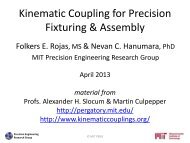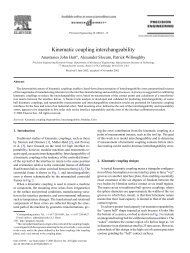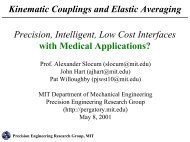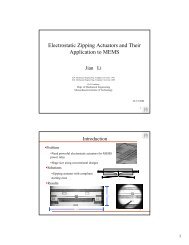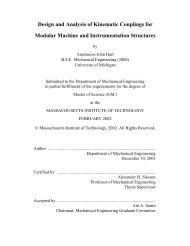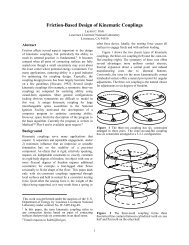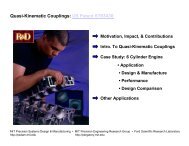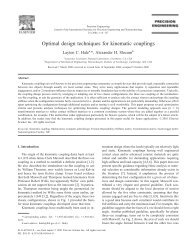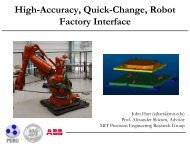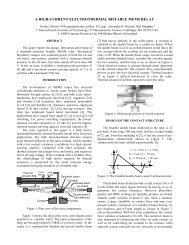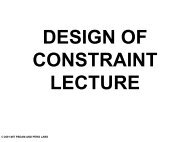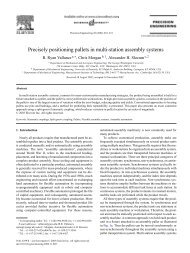Design of a Hybrid Positioner-Fixture for Six-axis Nanopositioning ...
Design of a Hybrid Positioner-Fixture for Six-axis Nanopositioning ...
Design of a Hybrid Positioner-Fixture for Six-axis Nanopositioning ...
Create successful ePaper yourself
Turn your PDF publications into a flip-book with our unique Google optimized e-Paper software.
<strong>Design</strong> <strong>of</strong> a <strong>Hybrid</strong> <strong>Positioner</strong>-<strong>Fixture</strong> <strong>for</strong> <strong>Six</strong>-<strong>axis</strong> <strong>Nanopositioning</strong> and Precision FixturingSubmitted to Precision Engineering1500Y displacementCommand [nm ]100050000 500 1000 1500Command [ nm ]Figure 22: Displacement test results <strong>for</strong> coupling displacement while balls are engaged in groovesAlthough smooth motion <strong>of</strong> the HPF may be assumed via use <strong>of</strong> the guiding and groove flexure bearings,it is helpful to validate this behavior and understand the smallest motion increment which may beachieved through the HPF. Figure 23 shows a magnified view <strong>of</strong> the rectangular detail in Fig. 22. Thefigure indicates that the engaged resolution <strong>of</strong> the HPF is approximately 4nm. This limit is due tolimitations <strong>of</strong> the electronics that drive the piezo actuators.Measured [ nm ]250225200175Y displacement (detail)Figure 23: Close up <strong>of</strong> rectangular detail in Fig. 22150150 175 200 225 250Command [ nm ]6.5. HPF repeatability in fixture modeOne thousand cycles <strong>of</strong> engagement and disengagement were per<strong>for</strong>med over the course <strong>of</strong> the 14 hourrepeatability test. The HPF was placed in fixture mode, meaning that the actuators were not used toenhance positioning per<strong>for</strong>mance. Positioning occurred solely due to the ball-grove interface interactionsand groove flexure bearing motions. Ideally, the actuators would be commanded to hold their positionthroughout the test. Although the piezos are equipped with internal strain gage sensors which could beused to maintain the position to better than 5nm, the limitations <strong>of</strong> our dSpace system prevent us fromsimultaneously reading six capacitance probes, reading six strain gages and supplying independentvoltages to the six piezos. A compromise approach was implemented in which the piezo actuators wereenergized with a constant voltage during the duration <strong>of</strong> the test. As such, the repeatability data willinclude errors from the piezo actuator creep. The results <strong>of</strong> the test are shown in Fig. 24.22



